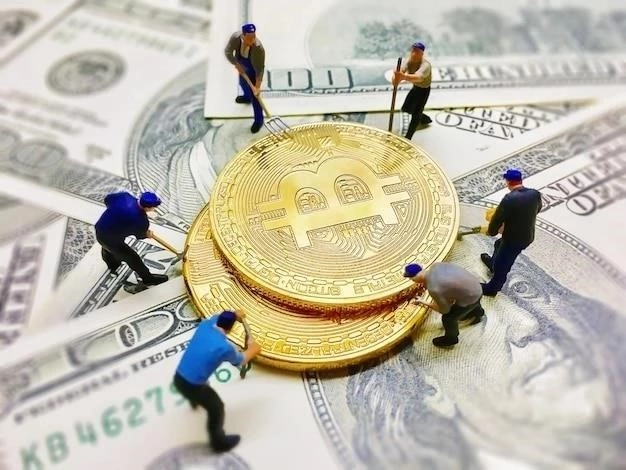The History and Evolution of Money: From Bartering to Bitcoin
The history of money is inextricably intertwined with the history of civilization itself. From the rudimentary barter systems of our ancestors to the complex digital economies of today, the evolution of how we exchange value has profoundly shaped the world we live in. This article delves into the fascinating journey of money, exploring its various forms and the transformative impact each stage has had on societies throughout history.
Bartering: The Genesis of Exchange
In the nascent stages of human societies, before the concept of money emerged, bartering served as the primary mode of trade. It was a direct exchange of goods and services, based on mutual needs and perceived value. For instance, a farmer with surplus grain could exchange it with a shepherd for wool. This system, while functional on a small scale, faced inherent limitations:
- Double Coincidence of Wants: Bartering required both parties to possess something the other desired, a condition often difficult to meet;
- Lack of Standard Value: Determining a fair exchange rate between dissimilar goods proved challenging, leading to disputes and inefficiencies.
- Storage and Divisibility Issues: Many goods were perishable or indivisible, making storage and smaller transactions problematic;

The Rise of Commodity Money
As societies grew larger and more complex, the shortcomings of bartering became increasingly apparent. This led to the emergence of commodity money – items with intrinsic value used as a medium of exchange. Early examples include:
- Livestock: In many cultures, cattle, sheep, and other livestock represented a measure of wealth and were readily tradable.
- Grains and Foodstuffs: Durable grains like wheat or rice served as a form of currency due to their universal need and relatively stable value.
- Shells, Beads, and Salt: These items, often prized for their beauty, rarity, or practical uses, gained acceptance as mediums of exchange in various parts of the world.
While commodity money addressed some limitations of bartering, it still presented challenges. Perishability, difficulties in transportation, and fluctuating values hindered its effectiveness as a universal system.
Metallic Money: A Paradigm Shift
The advent of metallurgy marked a significant turning point in the history of money. Metals, particularly gold and silver, possessed several characteristics that made them ideal for coinage:
- Durability: Metals resisted decay and could withstand repeated use, ensuring longevity.
- Divisibility: Metals could be easily divided into smaller units (coins) without losing their value, facilitating smaller transactions.
- Portability: Their high value-to-weight ratio allowed for easier transportation and storage.
- Intrinsic Value: Gold and silver held inherent worth beyond their monetary use, providing a sense of security and stability.
The first coins, attributed to the Lydians in 7th century BC, revolutionized commerce. Standardized weights and purity, often backed by the seal of a ruler or city-state, instilled trust and facilitated trade across vast distances. The widespread adoption of coinage fueled economic growth and led to the development of more sophisticated financial systems.
Paper Money: The Promise of Value
While coins solved many problems, transporting large quantities remained cumbersome. This, coupled with the increasing complexity of trade, paved the way for paper money. Initially emerging in China during the Tang Dynasty (7th century AD)٫ paper money represented a revolutionary concept – a promise of value backed by an authority٫ usually a government or bank.
Early forms of paper money were essentially promissory notes, redeemable for a specific amount of precious metal held in reserve. This system, known as representative money, evolved over time into fiat money, where the value is not tied to a physical commodity but decreed by the issuing government.
Paper money offered several advantages:
- Portability: Its light weight facilitated large transactions and eased transportation.
- Flexibility: Governments could readily adjust the money supply to meet economic demands.
- Reduced Reliance on Precious Metals: Fiat money decoupled economies from the limitations of finite gold and silver reserves.
However, paper money also presented risks. Overprinting could lead to inflation, and its value hinged on public trust in the issuing authority.

The Digital Age: From Plastic to Pixels
The 20th and 21st centuries have witnessed an unprecedented acceleration in the evolution of money. The rise of technology has ushered in new forms and systems, further abstracting the concept of currency:
- Credit and Debit Cards: These instruments, linked to bank accounts, enabled electronic transactions, reducing reliance on physical cash.
- Electronic Funds Transfer (EFT): Direct transfer of funds between accounts, facilitated by computer networks, further streamlined financial operations.
- Online Banking and Mobile Payments: Internet and mobile technologies have made financial transactions faster, more convenient, and globally accessible.
The Rise of Cryptocurrencies: A New Paradigm?
Emerging from the realm of cryptography and decentralized networks, cryptocurrencies like Bitcoin represent the latest chapter in the evolution of money. Based on blockchain technology, a secure and transparent digital ledger, cryptocurrencies operate independently of central banks and governments.
Cryptocurrencies offer several potential advantages:
- Decentralization: Control over the currency resides not with a single entity but is distributed across a network, potentially reducing censorship and manipulation.
- Security and Transparency: Blockchain technology ensures secure transactions and a public, tamper-proof record of all activity.
- Potential for Global Access: Cryptocurrencies have the potential to provide financial services to unbanked populations and facilitate cross-border transactions.
However, cryptocurrencies also face challenges:
- Volatility: Their value can fluctuate dramatically, creating uncertainty for users and businesses.
- Scalability: Existing blockchain networks face limitations in processing large transaction volumes.
- Regulation and Acceptance: The regulatory landscape for cryptocurrencies remains evolving, and widespread adoption is yet to be realized.

Conclusion: The Future of Money
The journey of money, from bartering to Bitcoin, reflects humanitys constant drive to innovate and adapt to changing needs. While predicting the future of money with certainty is impossible, several trends suggest a continued evolution towards digital, decentralized, and potentially globalized forms of currency.
Whether cryptocurrencies become the new norm or other, yet unimagined forms of exchange emerge, one thing is certain: the history of money is a testament to human ingenuity and the enduring power of innovation in shaping our world.
The Future of Money: A Convergence of Trends
Looking ahead, the evolution of money is likely to be shaped by the convergence of several transformative trends:
1. The Rise of Digital Sovereignty
The increasing digitization of finance empowers individuals and businesses with greater control over their financial assets. This shift towards “digital sovereignty” is fueled by several factors:
- Decentralized Finance (DeFi): DeFi platforms, built on blockchain technology, offer financial services like lending, borrowing, and trading without the need for traditional intermediaries like banks. This disintermediation could reshape financial landscapes and grant users greater autonomy.
- Central Bank Digital Currencies (CBDCs): Many central banks are exploring or developing their own digital currencies. CBDCs have the potential to enhance financial inclusion, streamline payments, and provide governments with greater control over monetary policy.
- Self-Sovereign Identity (SSI): SSI technologies empower individuals to manage their digital identities and control the sharing of their personal data. This has profound implications for financial services, enabling more secure and user-centric identity verification and data privacy.
2. The Internet of Value
Just as the internet revolutionized information sharing, we are witnessing the emergence of an “Internet of Value.” This interconnected ecosystem enables the seamless and instantaneous transfer of value across borders, platforms, and devices.
- Cross-Chain Interoperability: The development of interoperable blockchains allows different cryptocurrencies and digital assets to interact seamlessly. This fosters greater efficiency, liquidity, and accessibility within the digital economy.
- Programmable Money: Smart contracts, self-executing contracts on blockchain platforms, enable the creation of programmable money. This has the potential to automate complex financial agreements, reduce transaction costs, and unlock new business models.
- Tokenization of Assets: Tokenization, the process of representing real-world assets (e.g., real estate, art, intellectual property) as digital tokens on a blockchain, unlocks liquidity, fractional ownership, and greater accessibility to investment opportunities.
3. The Role of Artificial Intelligence (AI) and Data
AI and data analytics are poised to revolutionize financial services, enhancing decision-making, risk management, and personalized experiences.
- AI-Powered Financial Analysis: AI algorithms can analyze vast amounts of financial data to identify patterns, predict market trends, and provide personalized investment recommendations.
- Fraud Detection and Security: AI enhances security measures by detecting fraudulent transactions in real time, minimizing risks, and safeguarding financial systems.
- Personalized Financial Services: AI enables financial institutions to offer tailored products, services, and advice based on individual financial goals, risk tolerance, and spending habits.
Conclusion: Navigating the Evolving Monetary Landscape
The future of money is dynamic and complex, characterized by rapid innovation and a convergence of technological advancements. While challenges and uncertainties remain, the ongoing evolution of money presents exciting opportunities to build a more inclusive, efficient, and accessible financial system for individuals and businesses worldwide.
Beyond Bitcoin: The Future of Finance in a Decentralized World
While Bitcoin and cryptocurrencies have captured the publics imagination, their emergence represents just one facet of a much broader transformation underway in the financial landscape. We are witnessing a fundamental shift in how value is perceived, transferred, and managed, driven by the convergence of decentralization, digitization, and rapidly evolving technologies.
The Unbundling and Democratization of Financial Services
Traditionally, financial institutions have acted as gatekeepers, controlling access to and mediating essential services. However, the rise of decentralized technologies and open-source platforms is dismantling these traditional structures, fostering an environment of greater financial inclusion and empowerment.
- Decentralized Exchanges (DEXs): Peer-to-peer platforms powered by smart contracts are enabling direct trading of digital assets without intermediaries, reducing costs and increasing efficiency.
- Open Banking and APIs: Open banking initiatives are fostering greater interoperability between financial institutions and third-party providers through Application Programming Interfaces (APIs). This enables consumers and businesses to access a wider range of financial services and tailor them to their specific needs.
- Microfinance and Peer-to-Peer Lending: Blockchain-based platforms are facilitating micro-loans and peer-to-peer lending on a global scale, connecting investors with borrowers directly and empowering individuals in underserved communities.
Navigating Risk and Regulation in a Decentralized Ecosystem
The decentralized nature of these emerging financial technologies presents both opportunities and challenges for regulators. Balancing innovation with consumer protection, market integrity, and financial stability will be paramount.
- Regulatory Sandboxes: Governments and regulatory bodies are experimenting with “sandboxes” – controlled environments where fintech companies can test innovative products and services under regulatory supervision. This approach fosters innovation while mitigating potential risks to the broader financial system.
- Anti-Money Laundering (AML) and Know Your Customer (KYC) Compliance: Adapting existing AML and KYC regulations to the decentralized world is crucial to prevent illicit activities. Solutions involving decentralized identity verification and blockchain analytics are being explored.
- Global Coordination and Standards: International cooperation and the establishment of clear regulatory frameworks are essential to foster a stable and secure global financial system in the age of decentralized finance.
Conclusion: Embracing the Future of Finance
The evolution of money is an ongoing journey, marked by innovation, disruption, and adaptation. While challenges and uncertainties lie ahead, the convergence of decentralization, digitization, and groundbreaking technologies holds immense potential to reshape the financial landscape for the better. By embracing these advancements responsibly and fostering collaboration between innovators, regulators, and consumers, we can unlock a future of greater financial inclusion, efficiency, and empowerment for all.










